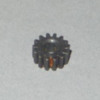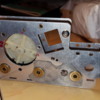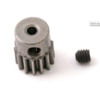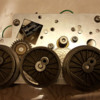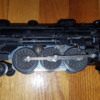Great work Chriss!
If the first video you posted is really "max speed" (as implied by the filename) then it's already slower than stock. Max speed of a stock 2036 would make it airborne on the first curve! Yes, regearing would help, but I know with these transverse motors that's tough to do. The manufacturers' answer was a change to worm drive, which would require some kind of gearbox, gear tower, or a major rework of the chassis.
Totally agree with adding weight- I would add some lead tire weights at the base of the chassis to make it a little heavier than stock. Magnets only work on ferrous track, and pick up all kinds of debris that might potentially foul the gears. Also, oil the axles and rollers of those passenger cars. If you have room, consider going with wider curves to reduce drag.
I want to echo what Adriatic said above... I'm really excited to see a thread about improving / modifying the performance of a postwar loco. Right now my trains are boxed up, but lately I have been dying to tinker and do something like this. Thanks for sharing and keep us posted about future developments!! -Ted




